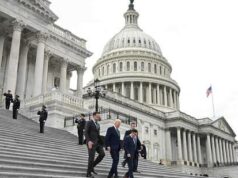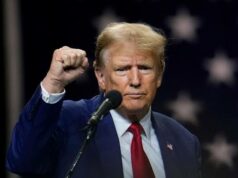Balancing USA And China While Pursuing Own National Interests
Foreign direct investment (FDI) is one of the major source of boosting India’s economic development. To become a 5 trillion dollar economy in next five years, we do need investments of around a trillion dollar at least. The flows of capital from China and the US have remained robust in recent years. US-based investors have focused on the internet and high technology, while Chinese companies have focused on manufacturing in telecommunication areas.
The escalating trade war between the US and China offers a great opportunity for India to attract large multinationals looking for fresh investment avenues. At this juncture, a policy of clear nonalignment can help India attract more FDI not only from others but also from both China and the US. India therefore must maintain equal balance between the two countries.
Just ahead of Pompeo’s visit, India raised tariffs on 28 items imported from the US in retaliation for Washington’s earlier withdrawal of trade privileges. Then India is also annoyed with American CAATSA and its pressure to cancel the S400 missile deal with Russia. Another very annoying factor is the American unilateral move on import of oil from Iran. There may be some forward movement in bilateral talks, but both sides are unlikely to compromise when it comes to core interests.
US Secretary of State Mike Pompeo said in India that the US-India partnership “is already beginning to reach new heights,” but the bilateral relationship is not what it appears. India needs to increase its export where as America is trying to reduce its increasing trade deficit.
This is causing frequent trade disputes between the two countries in recent times and on top of that are the frequent tantrums thrown in by the American President on Russia, China and Iran which as an independent Power cannot be accepted by India.
India has long been seen by America as counterweight to China. This may explain why Washington is enthusiastic about the Indo-Pacific strategy, which reflects the attention of the US to the Indian Ocean region.
If India takes the China factor into account and properly handles the issue, it may gain the initiative in its relations with the US and be able to seek more benefits.
On the other hand if India gets too close to China, its economic problems with the US may escalate at any time and worsen the strained bilateral relationship with Washington.
However getting close to China is hindered by many sovereign issues, like China use of areas in Indian state of Kashmir, for its OBOR and CPEC projects, which is under illegal occupation of Pakistan.
Then China frequently keeps making statements with Indian State of Arunachal Pradesh. Even the future of Tibetan people have to be settled to the satisfaction of every one concerned.
New Delhi does not need Washington to counter China’s influence in the Indian Ocean region, this India is doing on its own and has been quite successful.
In fact most countries are now realizing that the promised growth opportunities by the Chinese through its BRI has not materialized.
Even the Indo-Pacific strategy, which reflects a US effort to counter China’s rise, is being turned into BIMSTEC -ASEAN cooperation by India to pursue its economic growth. India is trying to invite even Russia into this trade grouping.
Pompeo’s visit to India will be fruitful only if he can offer a package of incentives that do not impinge on India’s national interests. India is not a camp follower and will charter its own policies.



